Homemade Butterscotch Sauce is rich, smooth, and velvety with a buttery brown sugar flavor, hint of vanilla, and touch of salt for balance. It comes together in just 10 minutes from start-to-finish and is better than anything you can buy at the store!
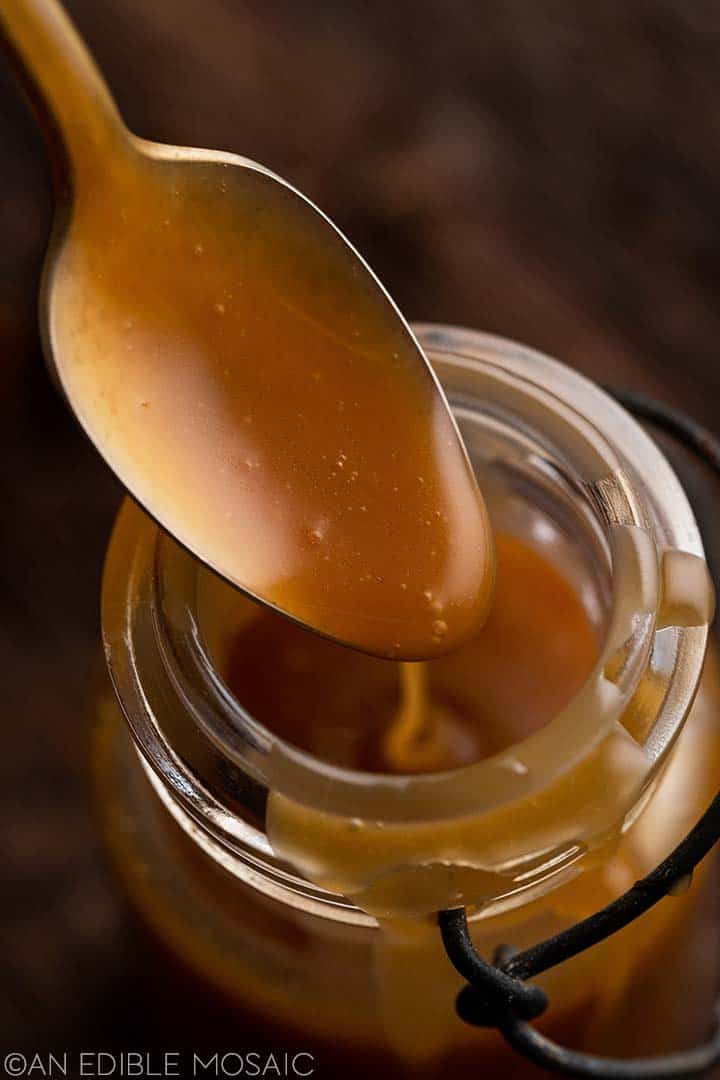
I don’t know about you, but I can’t remember the last time I had butterscotch sauce.
Maybe it’s from a bygone era, or maybe it’s just not that popular here. It always seems to take the backseat to its more popular cousin, caramel sauce. But butterscotch is worth revisiting!
The best way I can describe butterscotch sauce is pure decadence.
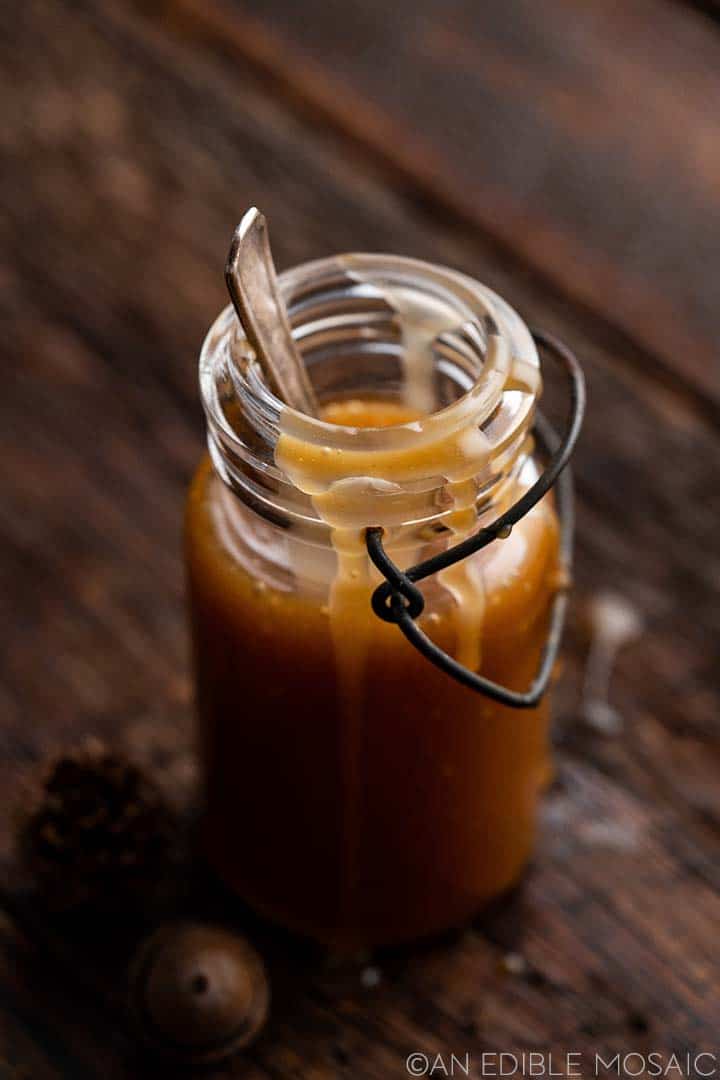
Take 10 minutes to whip up this butterscotch sauce and you’ll start to think of a ton of different ways to use it! Here are a few ideas to get you started:
- On top of ice cream sundaes – this is a classic for good reason!
- With sliced apple for dipping
- Drizzled on yogurt or oatmeal
- On buttermilk pancakes instead of maple syrup
- Along with whipped cream as a topping for the best hot chocolate of your life
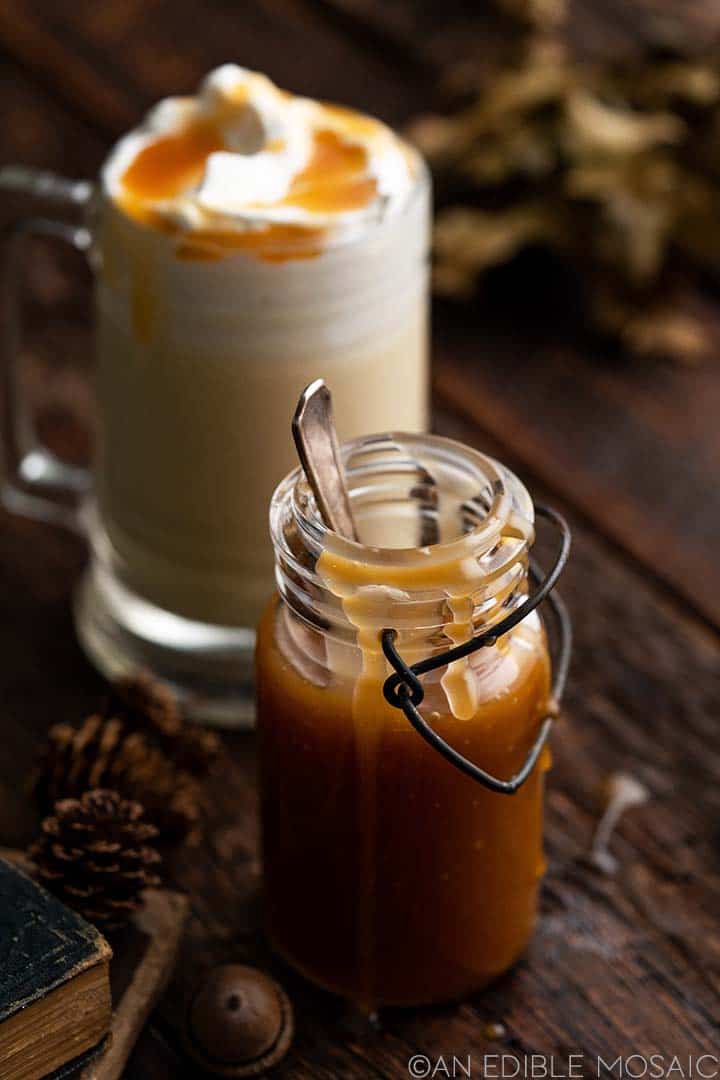
Above: One of my favorite ways to use this sticky-sweet syrup is to make a homemade Butterbeer.
Why This Recipe Works
- Butterscotch sauce isn’t complicated! At its core, it’s a sauce consisting of butter and brown sugar. For this recipe, we keep the ingredient list and the method simple because it works perfectly.
- To help prevent crystallization, we add a little bit of cream of tartar! No corn syrup need, this method works like a charm.
- This sauce keeps well for up to 2 months stored in the fridge. It’s perfect to keep on hand for ice cream night, jazzing up pancakes, or making a fancy hot cocoa.
The Best Easy Butterscotch Sauce Recipe
You are going to love how easy this decadent dessert sauce is to make! And you’re going to find a ton of ways to use it.
Ingredients
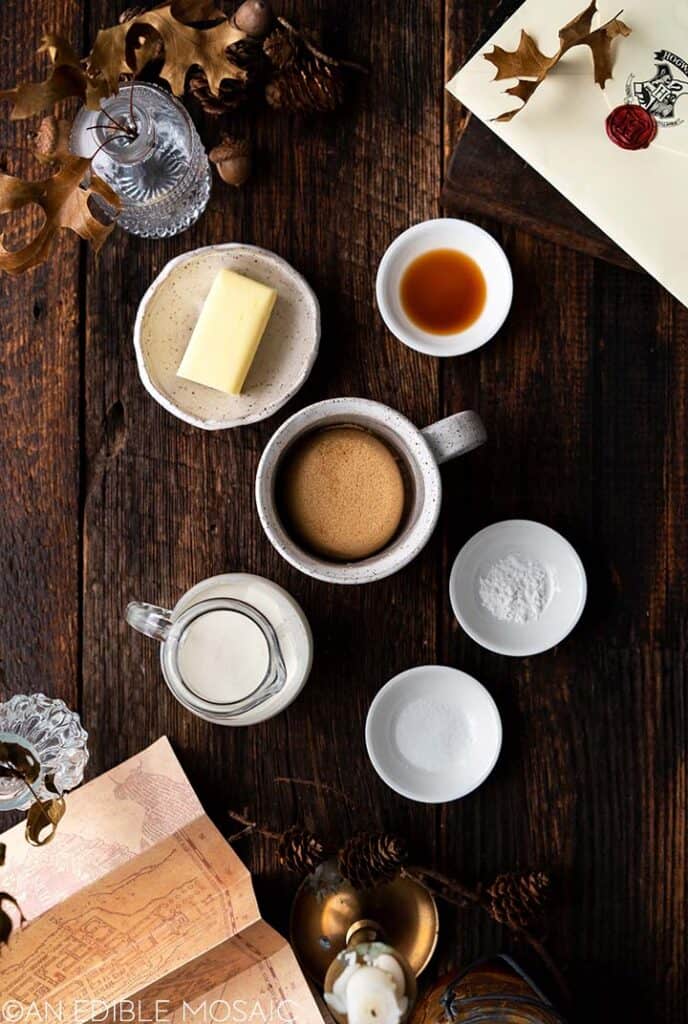
- Unsalted butter – if you use salted butter, reduce the salt to ⅛ teaspoon
- Light brown sugar – adds rich, deep notes of molasses
- Salt – to balance the sweetness and enhance the flavor
- Cream of tartar (optional) – this is a failsafe to help prevent your butterscotch from crystalizing! Some people use corn syrup, but instead we use cream of tartar, which is a natural by-product of winemaking. Instead of cream of tartar, you can use another acid; ½ teaspoon lemon juice works well
- Heavy whipping cream – makes the sauce smooth, velvety, and absolutely luscious
- Vanilla extract – adds a hint of flavor and aroma to make this butterscotch syrup irresistible
Step-by-Step Instructions
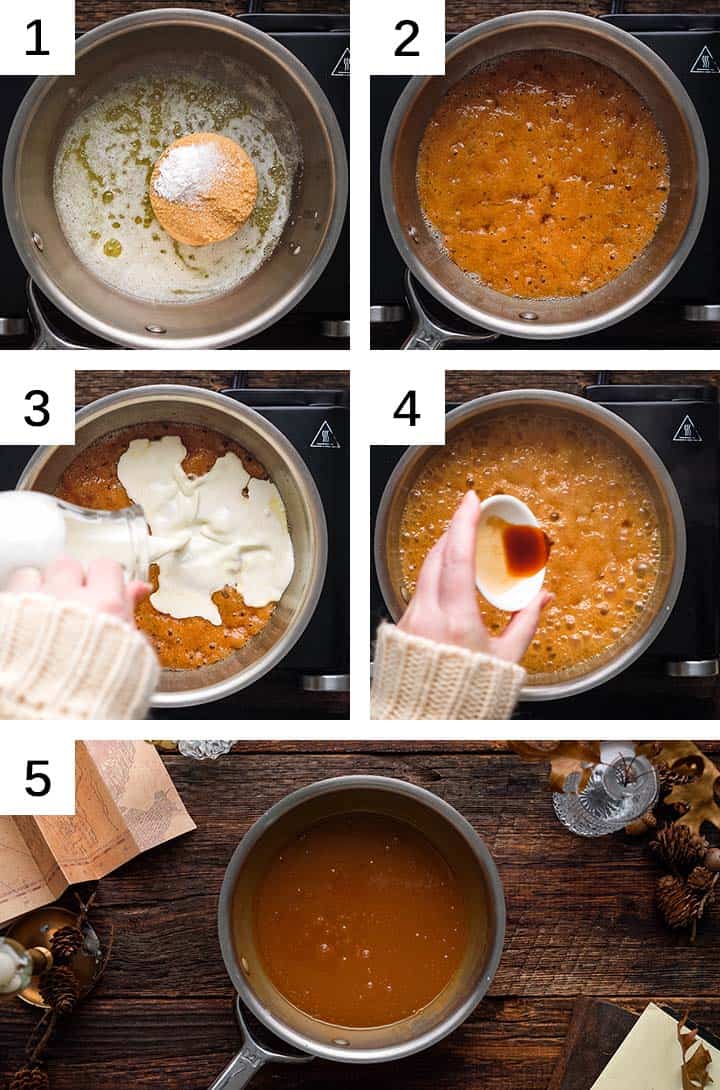
- Add the butter to a medium-sized saucepan over medium heat. Once melted, stir in the brown sugar, salt, and cream of tartar.
- Cook until the sugar is melted and the mixture is boiling, about 1 to 2 minutes, stirring occasionally.
- Carefully add the cream (it will bubble up), and stir to combine. Let it boil for about 3 to 5 minutes until it’s thick enough to coat the back of a wooden spoon, stirring occasionally. It should reach 225F on a candy thermometer, but you don’t really need a candy thermometer to make this.
- Remove from the heat and stir in the vanilla.
- The resulting butterscotch syrup is rich, decadent, and delicious!
Storage
Let this cool to room temperature, and then transfer it to a glass container with a lid. Store in the fridge for up to 2 months.
You can reheat this sauce in a double boiler on the stovetop or in 10-second increments in the microwave, stirring between each increment.

Tips to Prevent Crystallization
Cream of tartar is an acid, and we use it here to help prevent sugar crystallization.
If you don’t have cream of tartar on hand or prefer not to use it, you can omit it and instead use ½ teaspoon fresh lemon juice. And if you don’t have fresh lemon juice, this recipe will still work, you just have to be more vigilant.
If you start to see crystallization, add more water. You can brush the sides of the pan with water, or stir a couple tablespoons of water into the sauce. Once the water cooks off, the caramelization process will resume and it should have gotten rid of the crystallization.
Pro Tip: To help prevent crystallization, don’t stir the mixture until it starts to change color.
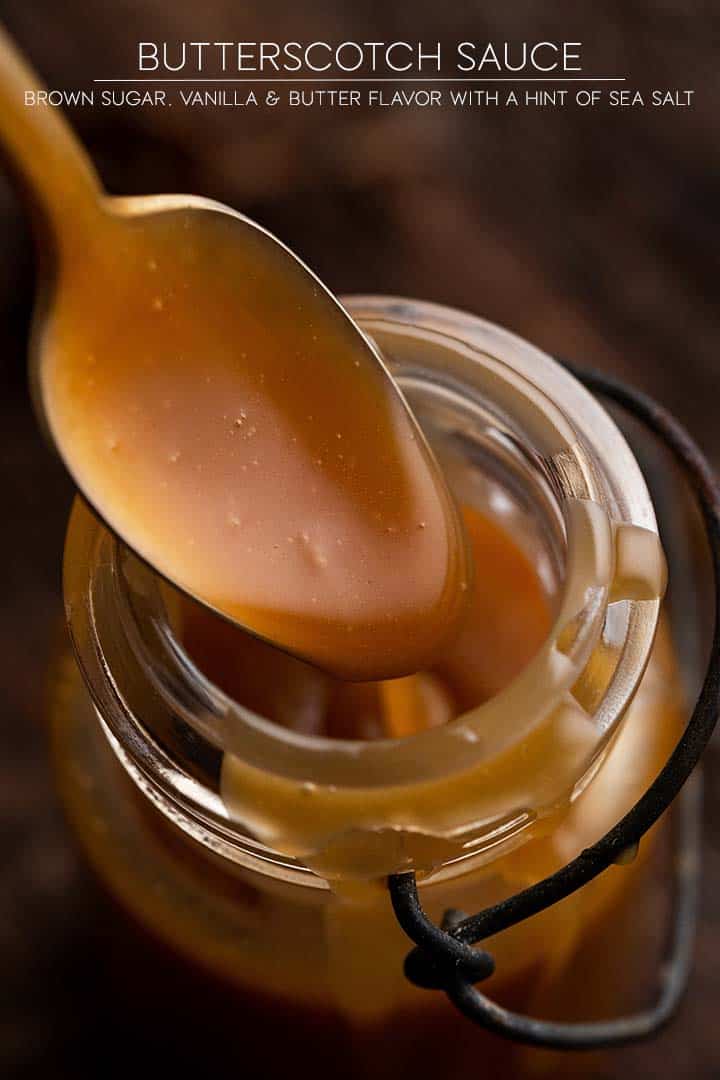
Butterscotch Sauce FAQs
What is the Difference Between Caramel Sauce and Butterscotch Sauce?
Caramel is made with white sugar and butterscotch is made with brown sugar. They both contain butter, and frequently vanilla and salt.
Why is My Butterscotch Sauce Grainy?
Sugar crystallization can cause butterscotch to be grainy!
In this recipe, adding cream of tartar helps prevent crystallization. Alternatively, instead of cream of tartar you can add ½ teaspoon fresh lemon juice.
How Long Does Homemade Butterscotch Sauce Last?
Stored in a covered glass container in the fridge, this will last up to 2 months.
This sauce will thicken after it’s refrigerated. To thin it out, you can reheat it in a double boiler on the stovetop or in 10-second intervals in the microwave.
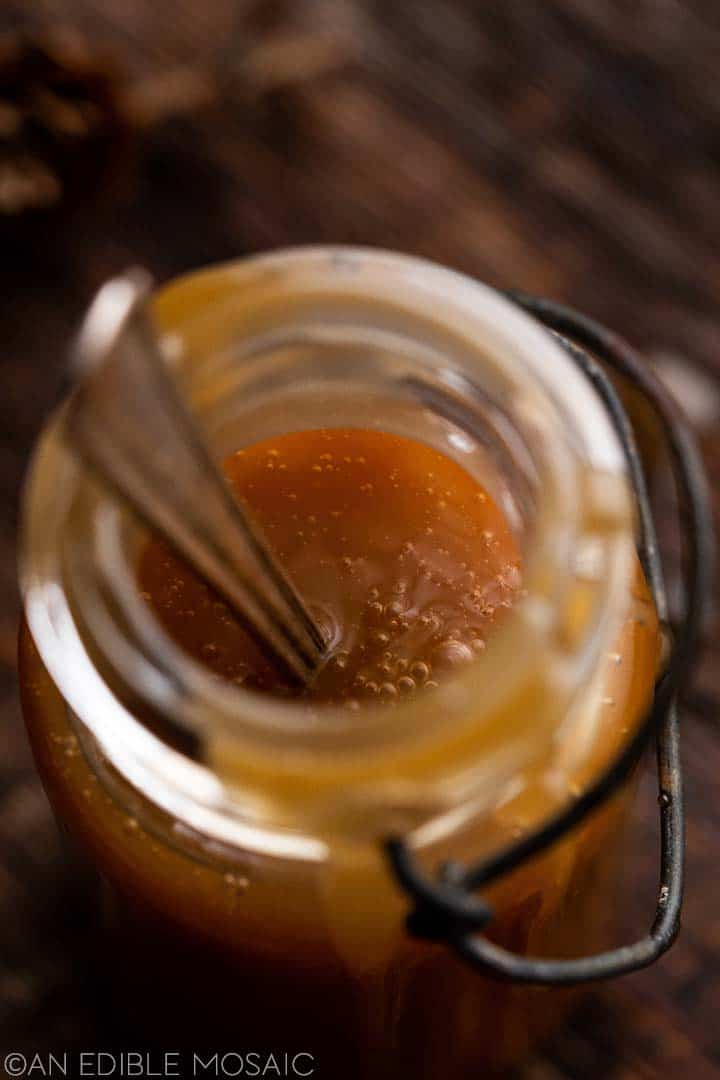
More Sweet Sauces to Make
- Cherry Sauce – a sweet, richly fruity sauce made from dried cherries
- Keto Sugar Free Caramel Sauce – perfect if you want a low carb alternative
- Salted Caramel Sauce – a delicious paleo treat made from coconut milk
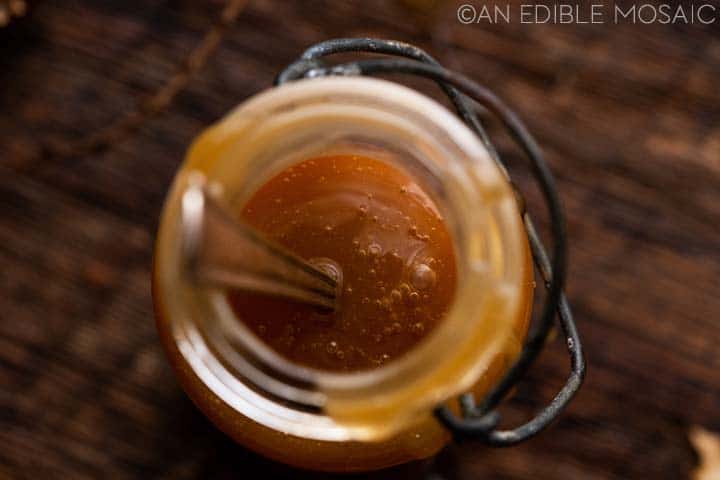
Let's Connect

Did you make this recipe? Please rate it and leave a comment below. You can also tag @anediblemosaic on social media.
To stay up-to-date, follow me on Facebook, Instagram, Pinterest, and Twitter!
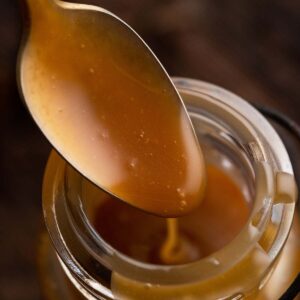
Butterscotch Sauce Recipe
Ingredients
- 4 tablespoons unsalted butter
- ½ cup light brown sugar lightly packed
- ¼ teaspoon salt
- ¼ teaspoon cream of tartar
- ⅔ cup heavy whipping cream
- 1 teaspoon pure vanilla extract
Instructions
- Add the butter to a medium-sized saucepan over medium heat. Once melted, stir in the brown sugar, salt, and cream of tartar. Cook until the sugar is melted and the mixture is boiling, about 1 to 2 minutes, stirring occasionally.
- Carefully add the cream (it will bubble up), and stir to combine. Let it boil for about 3 to 5 minutes until it’s thick enough to coat the back of a wooden spoon, stirring occasionally. It should reach 225F on a candy thermometer, but you don’t really need a candy thermometer to make this.
- Remove from the heat and stir in the vanilla.
Faith's Tips
- Cream of Tartar: Cream of tartar is an acid, and we use it here to help prevent sugar crystallization. If you don’t have cream of tartar on hand or prefer not to use it, you can omit it and instead use ½ teaspoon fresh lemon juice. And if you don’t have fresh lemon juice, this recipe will still work, you just have to be a bit more careful. If you start to see crystallization, add more water. You can brush the sides of the pan with water, or stir a couple tablespoons of water into the sauce. Once the water cooks off, the caramelization process will resume and it should have gotten rid of the crystallization.
- To Help Prevent Crystallization: Don’t stir the mixture until it start to change color, which means the sugar is starting to caramelize.
- Recipe Yield and Serving Size: This recipe makes about 18 tablespoons (1 cup + 2 tablespoons) total. Each serving is 2 tablespoons for a total of 9 servings.
- Storage: Let this cool to room temperature, and then transfer it to a glass container with a lid. Store in the fridge for up to 2 months.
- To Reheat: You can reheat this sauce in a double boiler on the stovetop or in 10-second increments in the microwave, stirring between each increment.
Nutrition
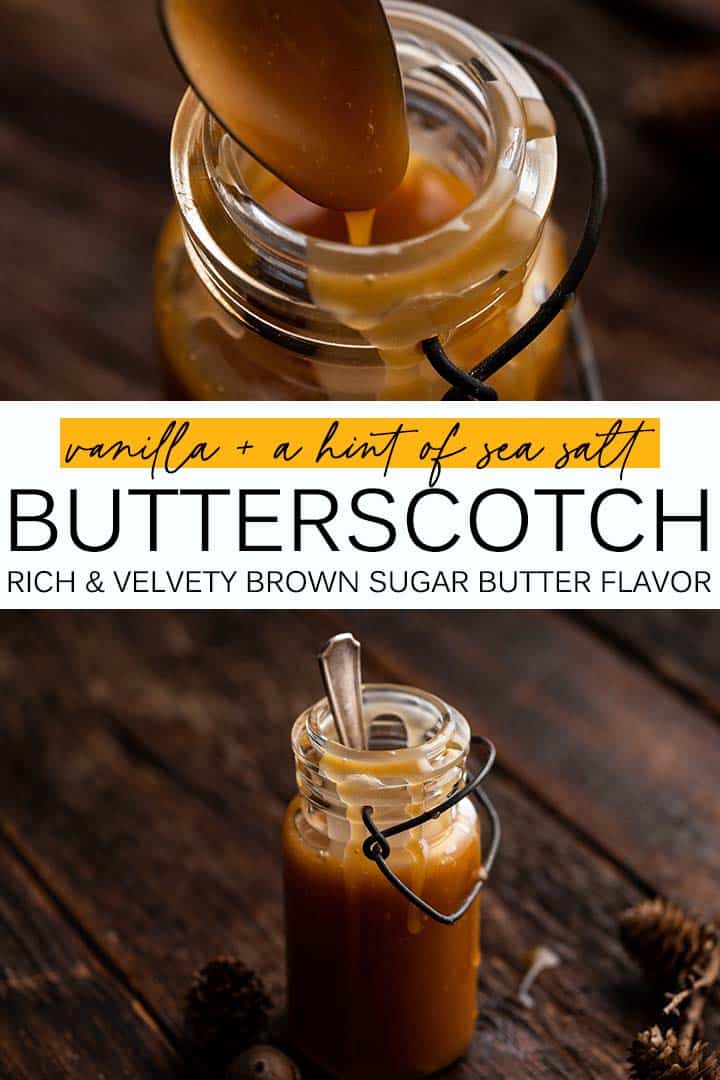

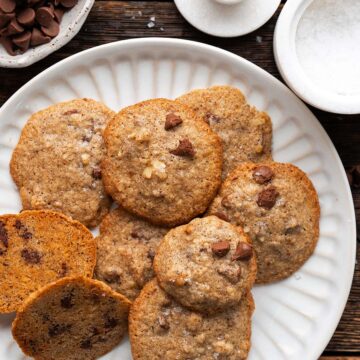
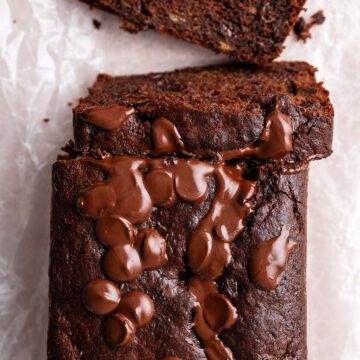
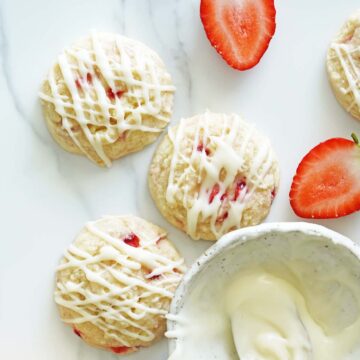
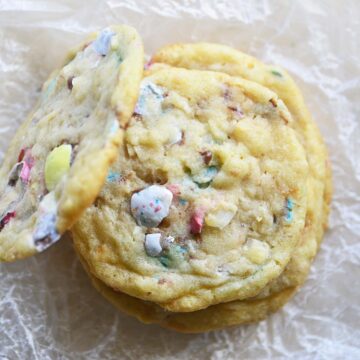
Leave a Reply